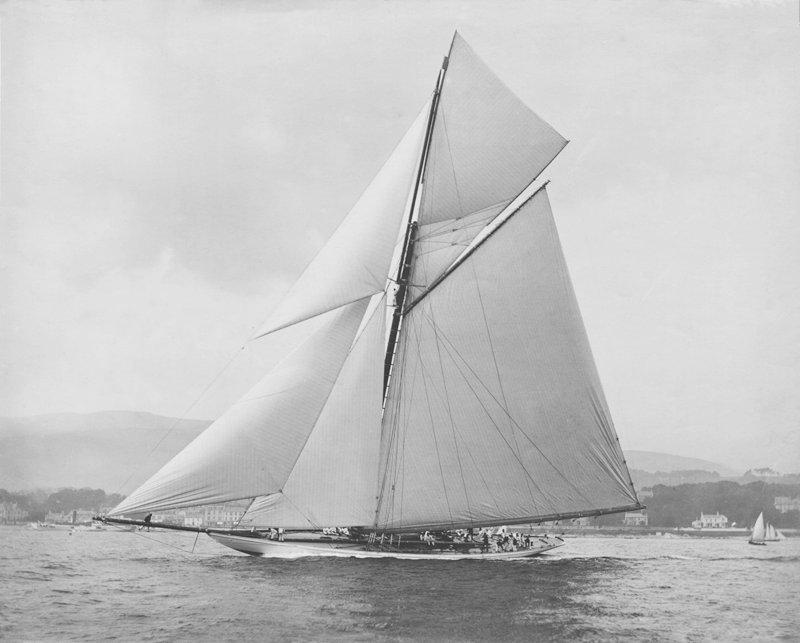
|
REF : 0
EDITION : 1895
DATE : 1895
COURSE : 0
DESCRIPTION SITE :
Inscription/Marks : stamped on verso: Charles L. Ritzmann, Importer, 943 Broadway and 117 1/2 Fifth Ave., New York.
Notes
Port view of the Valkyrie II, a gaff-rigged cutter, under full sail. She was designed by George Lennox Watson and built with His Majesty's Yacht Britannia by D & W Henderson & Company, Meadowside, Partick on the River Clyde, Scotland in 1893 for owner Lord Dunraven of the Royal Yacht Squadron.
Valkyrie II had a steel frame, a wooden hull, and a pine deck.Valkyrie II was launched on April 29th, 1893, a week after Britannia, and sailed to the U.S. that October to compete in the eighth America’s Cup. It lost to New York Yacht Club defender Herreshoff-designed Vigilant, 0-3. Valkyrie II existed for barely a single year. On July 5th, 1894 this Cup contender collided with A. D. Clarke’s cutter yacht Satanita at the Mud Hook Regatta on the Firth of Clyde, killing one crewman. Valkyrie II broke up and sank nine minutes later.
From the book: The big class racing yachts
by John Leather
The mighty Valkyrie III beats down the Clyde in 1895. Captain William Cranfield is to weather of her long tiller and Captain Edward Sycamore of Brightlingsea is at the lee side; both are distinguished by their blue suits from the crew of thirty-five in white duck jumpers and trousers.
She is setting her full sail area of 13,028 square feet, which was increased to approximately 20,000 square feet when the spinnaker was set. The jib and mainsail are not setting well, despite careful trimming of the new sails. In contrast, the jib topsail and the yard topsail stand beautifully. The size of its individual sails is emphasized by the three rows of reefing eyelets across the big mainsail, instead of the usual two on contemporary yachts. The staysail, which appears modest in size but is actually 1,530 square feet, could have two reefs tucked in when racing in conditions when it might be better to reef rather than waste more time switching to a smaller reef . The large platform is supported by two topping elevators and necessarily includes elaborate metal sheets. The bowsprit, 33 feet outboard, was proportionately longer than that of early Watson cutters of this type, and curves upward despite the bobstay and martingale. The second, in a dark jacket, walks alongside it, probably to observe the adjustment of the front sails, for which he was responsible. The topsail rises above the head of the upper mast, 137 feet above the deck. One of its mastheads is perched alone, high up on the strut, under the crosspieces.
Valkyrie III probably sails at 13-14 knots and although her bow makes little noise, it leaves a quarter wave rolling and breaking. During one of her trial runs, in a strong wind, she sailed down the Clyde on a reach and her surging wake capsized a small ferry, but fortunately none of her passengers drowned.
Public domain
| LIENS VERS CE DOCUMENT | ||||
| SITE | LARG | HAUT | ADRESSE | |
 |
The Mariners' Museum and Park | 800 | 643 | http://images.marinersmuseum.org/#/gallery/edwin-levick-americas-cup/py80-valkyrie-iii/ |